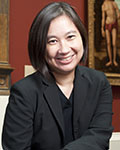2012
Lisa Pon
- Associate Professor
- Southern Methodist University

Abstract
With few natural resources beyond its beautiful and strategic location, early modern Venice was particularly vulnerable to recurrent outbreaks of plague: its economy was based on trade that necessitated traffic to and from potentially plague-ridden lands. Venice’s responses to the challenges of the plague thus shaped the city in fundamental ways, from the output of its signal industry of printing; to changes in the bureaucracy of its famously “perfect” government; to the great votive churches built by Palladio and Longhena. This project thus explores how early modern Venetians sought to understand and control their experience of the plague, both in the conceptual space made by ink and paper, and on the land and water of the Venetian lagoon.

